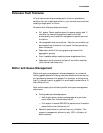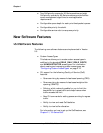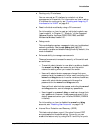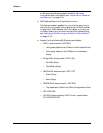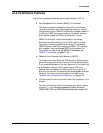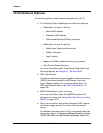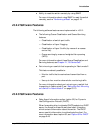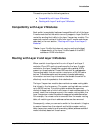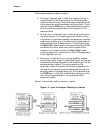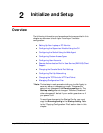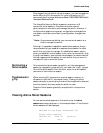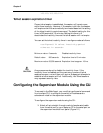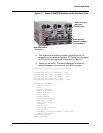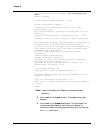
Avaya P550R, P580, P880, and P882 Multiservice Switch User Guide, v5.3.1 1-29
Introduction
This section provides the following sections:
■ Compatibility with Layer 2 Modules
■ Routing with Layer 2 and Layer 3 Modules
Compatibility with Layer 2 Modules
Each switch is completely backward compatible with all of the layer
2 media modules that the switch currently supports. Layer 3traffic is
routed by sending that traffic to the layer 3 supervisor module. The
supervisor module routes all traffic from layer 2 media modules as
described in the next section, “Routing with Layer 2 and Layer 3
Modules.”
* Note: Layer 2 traffic that does not require routing is bridged
independently of the layer 3 traffic based on the MAC
address or VLAN information.
Routing with Layer 2 and Layer 3 Modules
When a switch is configured with a mix of layer 2 and layer 3
modules, IP and IPX routing is performed by the layer 3 media
modules or the layer 3 supervisor module using special ASICs
present on those modules. These ASICs contain an address cache
(forwarding table) that can contain a maximum of 20,000 cache
entries. The address cache entries consist of packet addressing
information and next hop information that enable the switch to
effectively route the packets to their destination.
The layer 3 supervisor module also maintains a master routing table
that is kept in the its memory. The master routing table can contain
up to 28,000 entries. This routing table enables the supervisor
module to keep track of which entries are in each address cache. As
a result, each time a change occurs in the master routing table, the
layer 3 supervisor module updates the appropriate address caches.
For example, if a unicast route is removed from the master routing
table, all matching entries in address caches are also removed.
Consequently, when you connect a switch to the network, it begins
to receive frames from the network and builds a master routing
table (supervisor module) and forwarding tables (address caches of
media modules) based on those frames.



